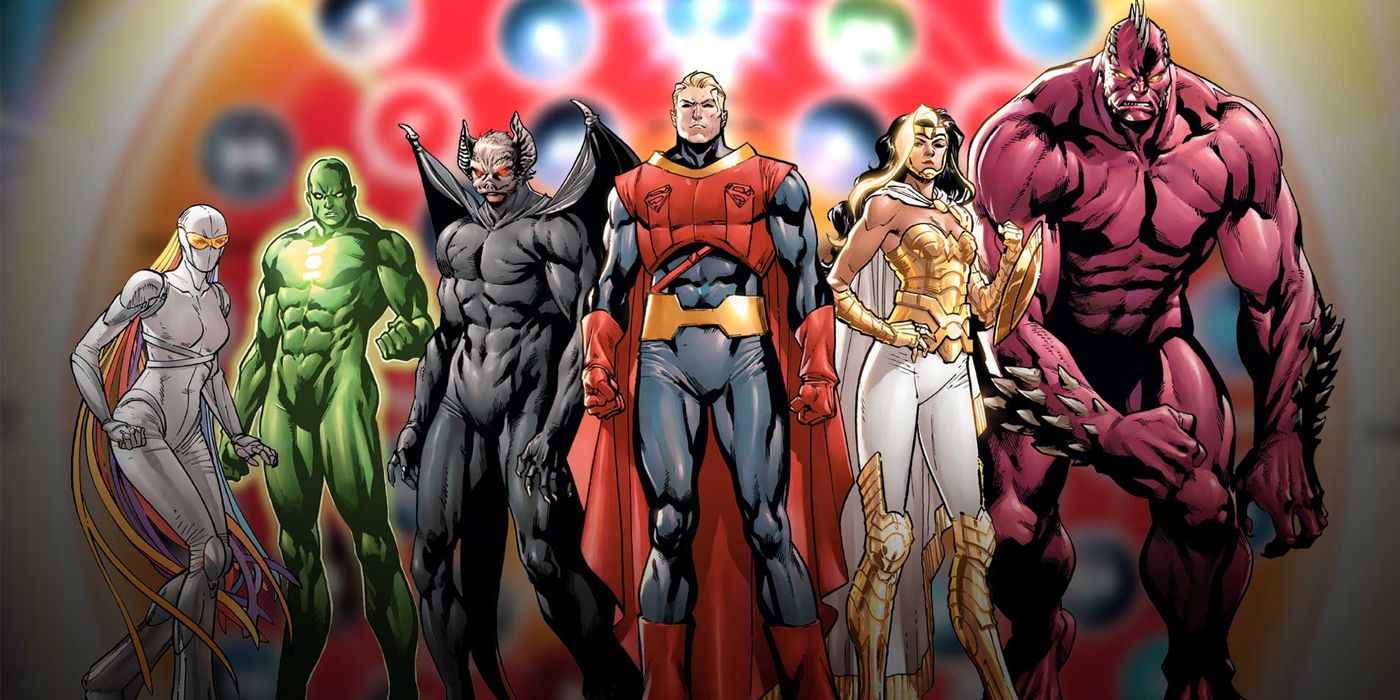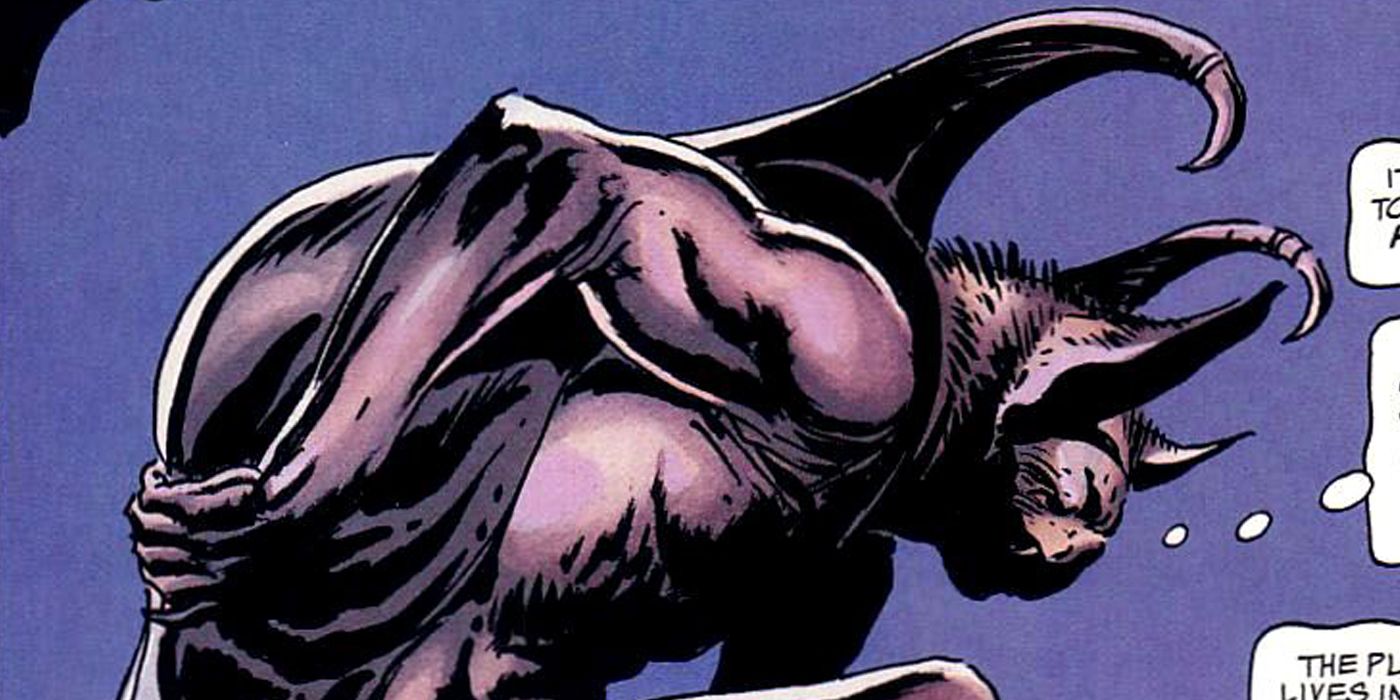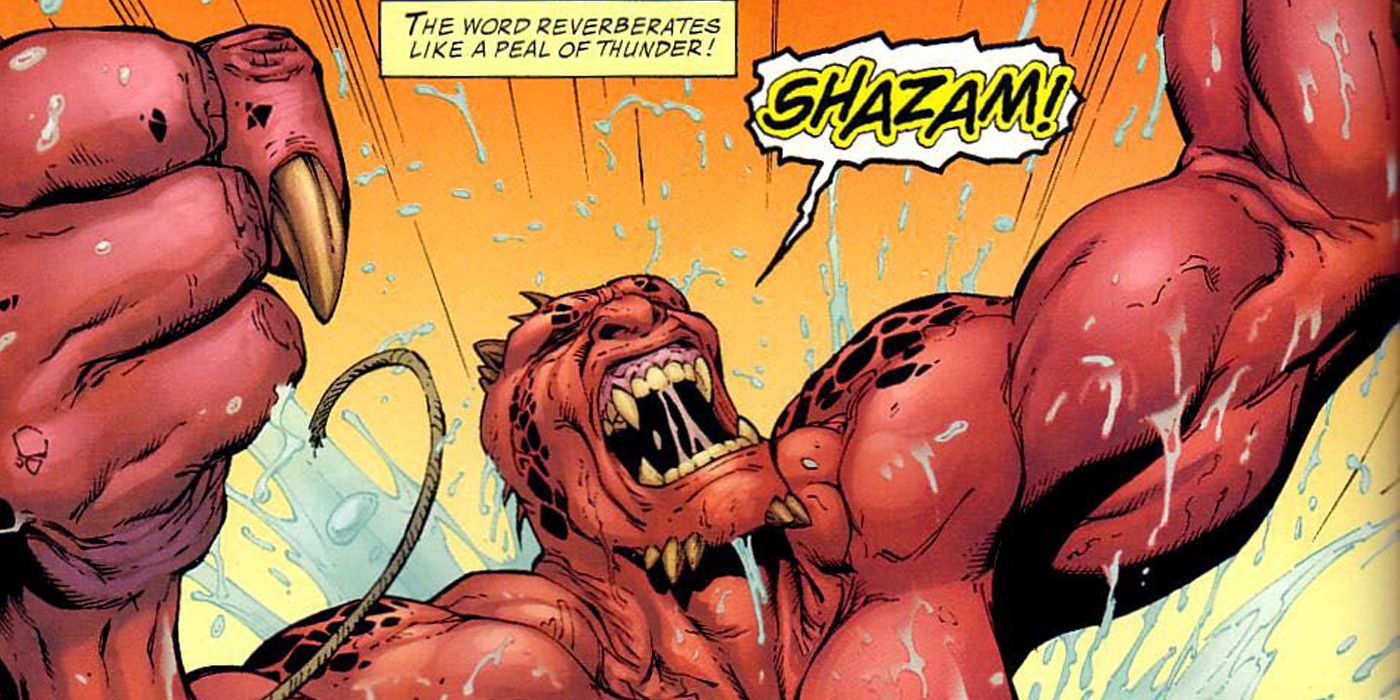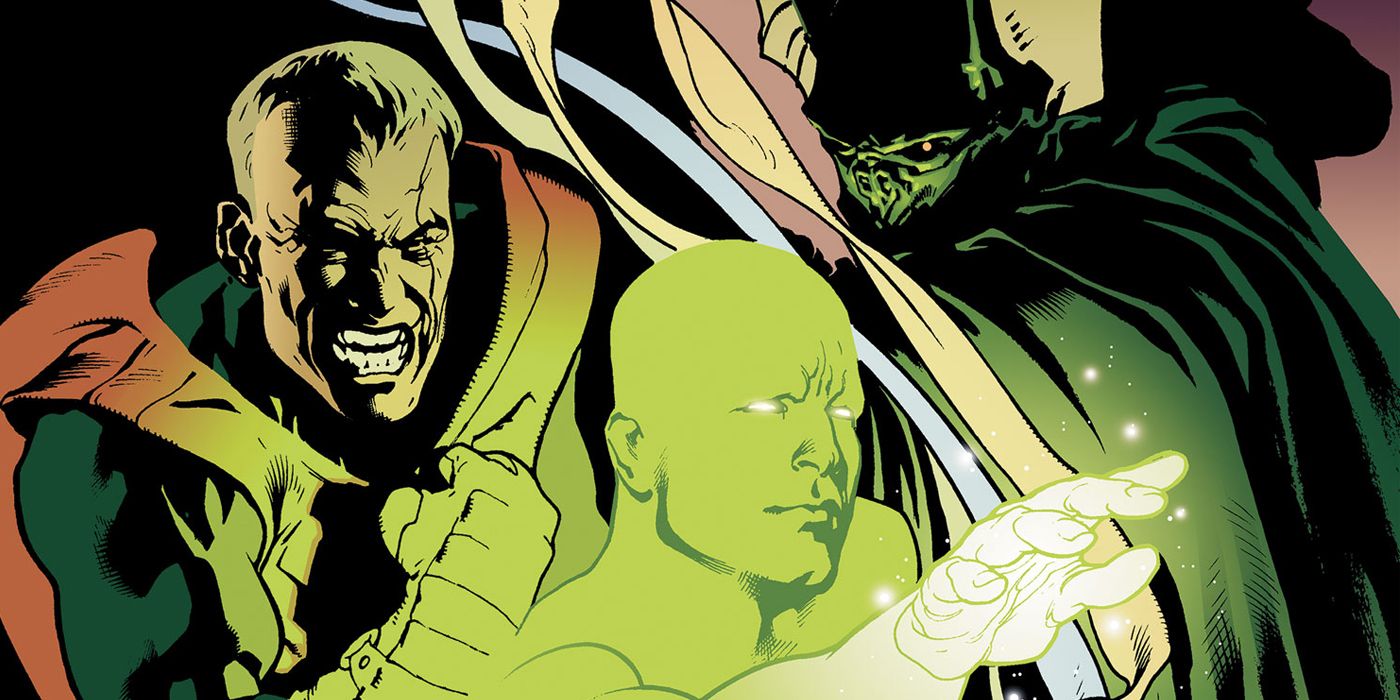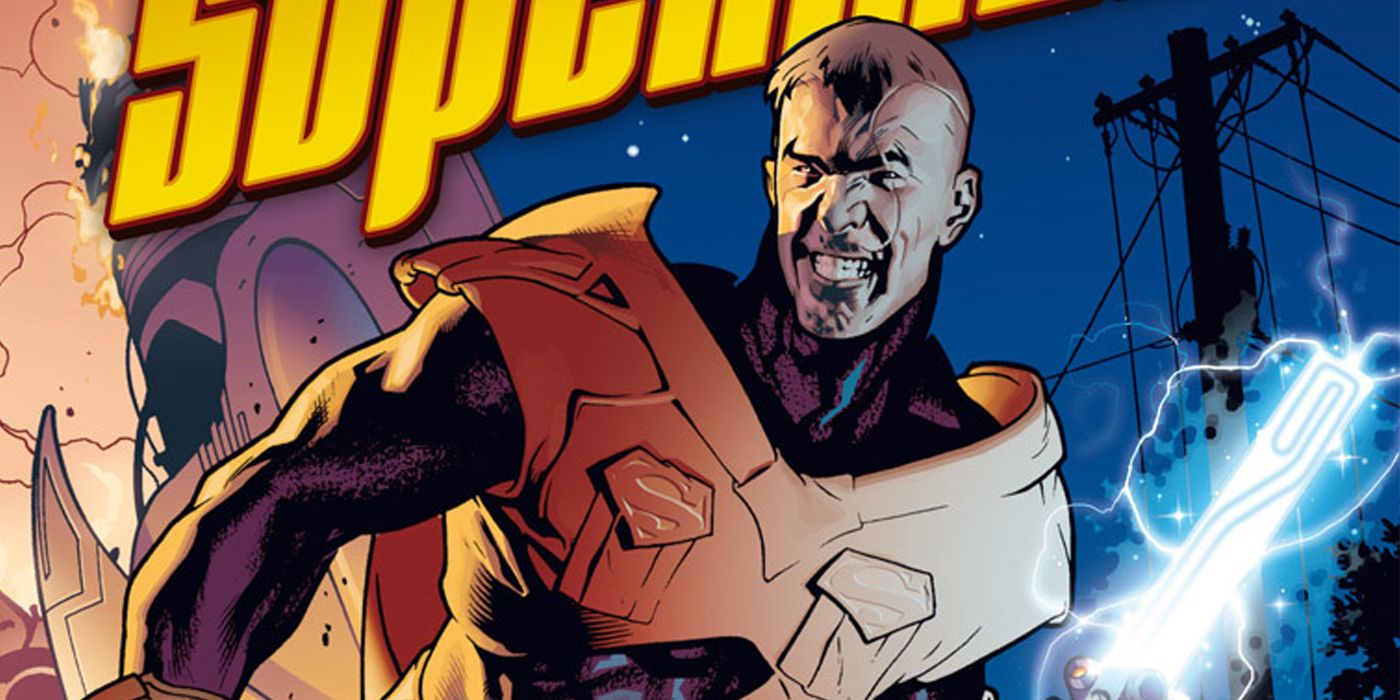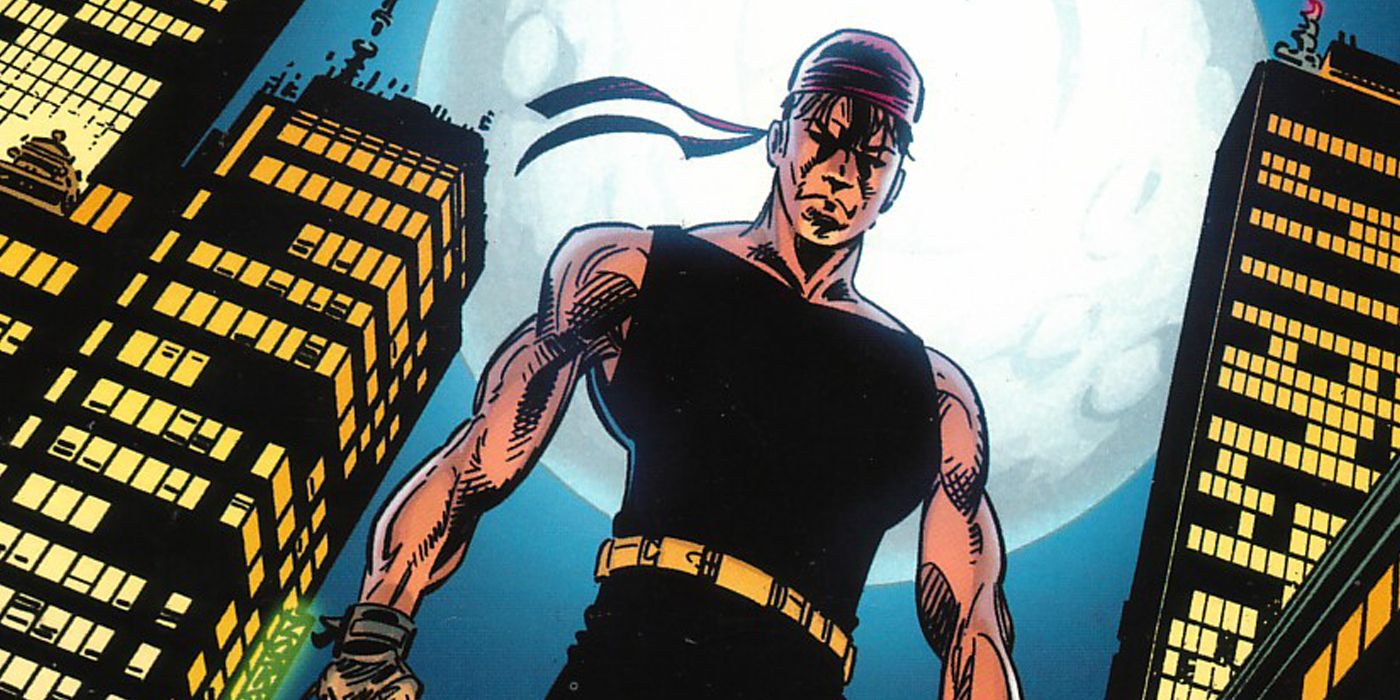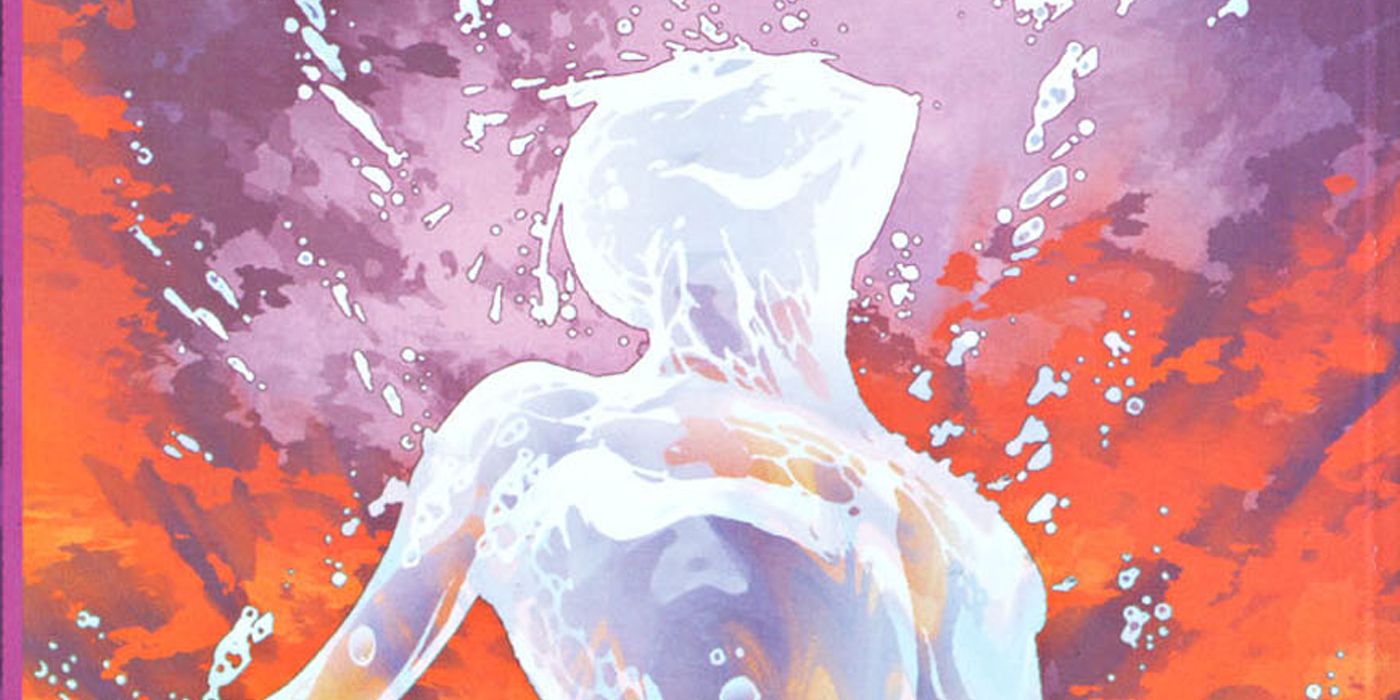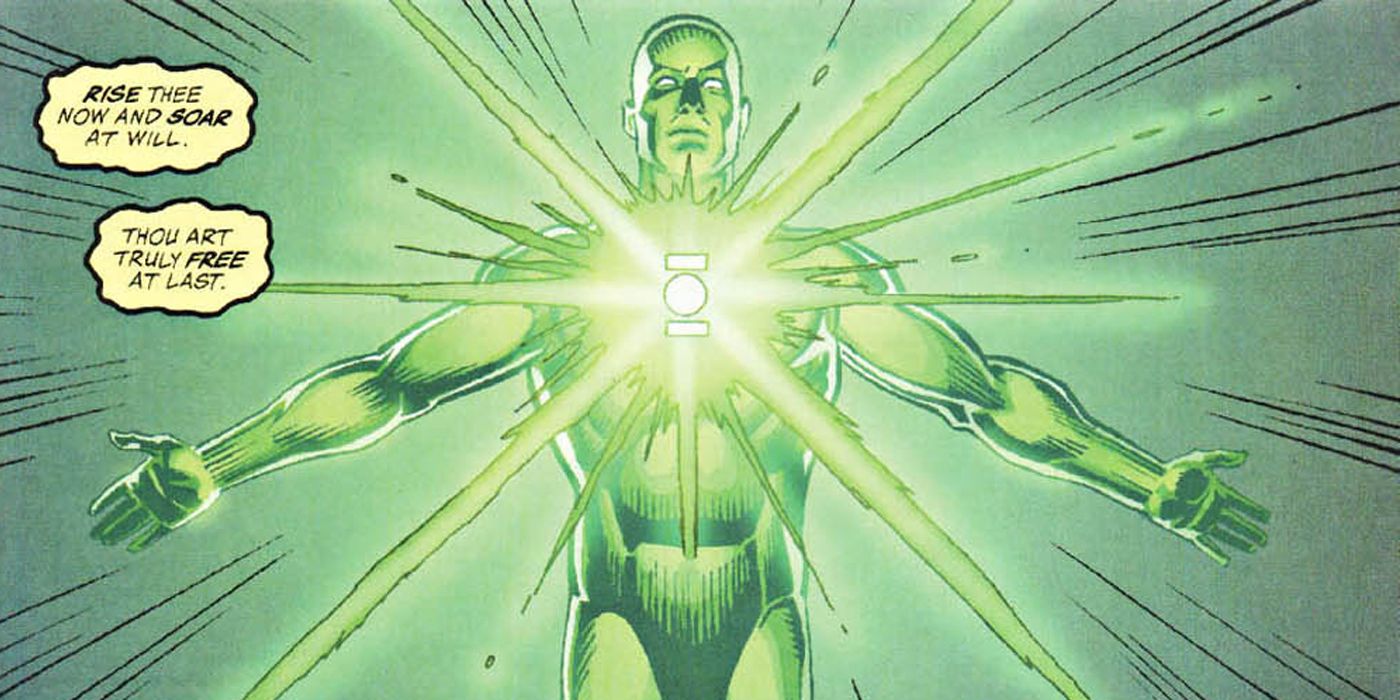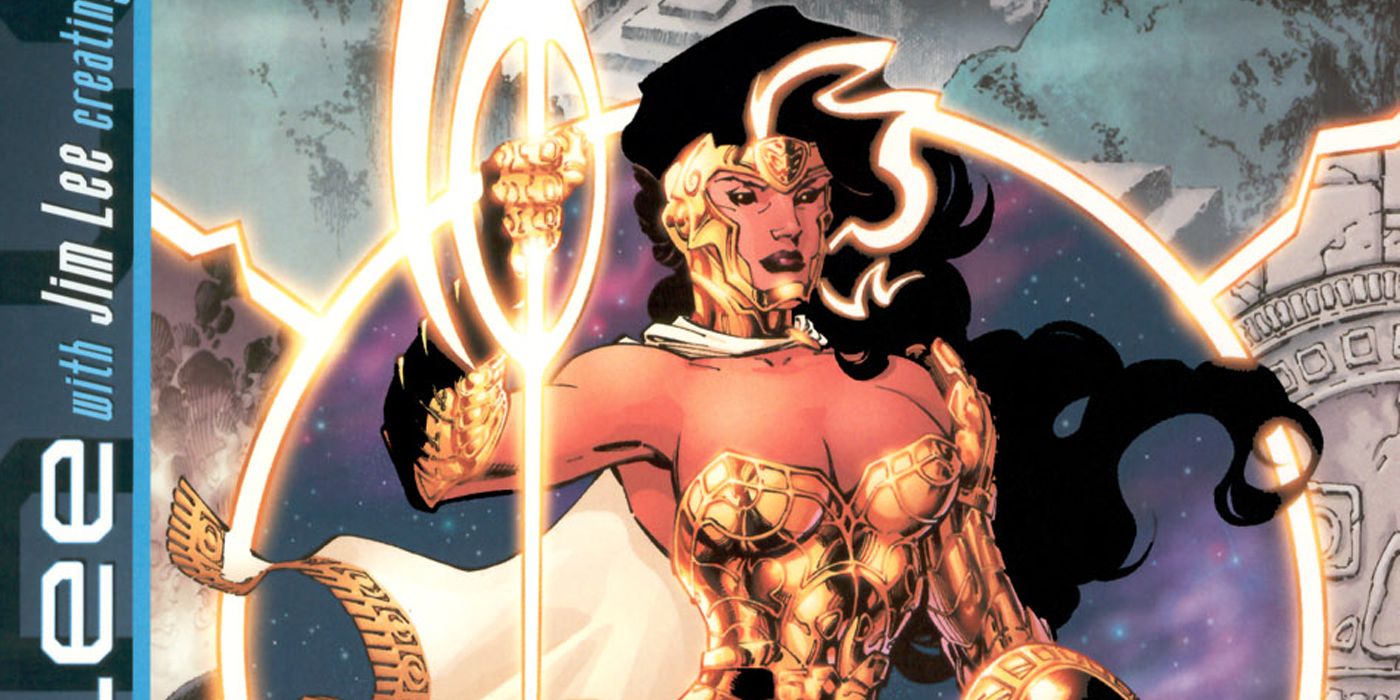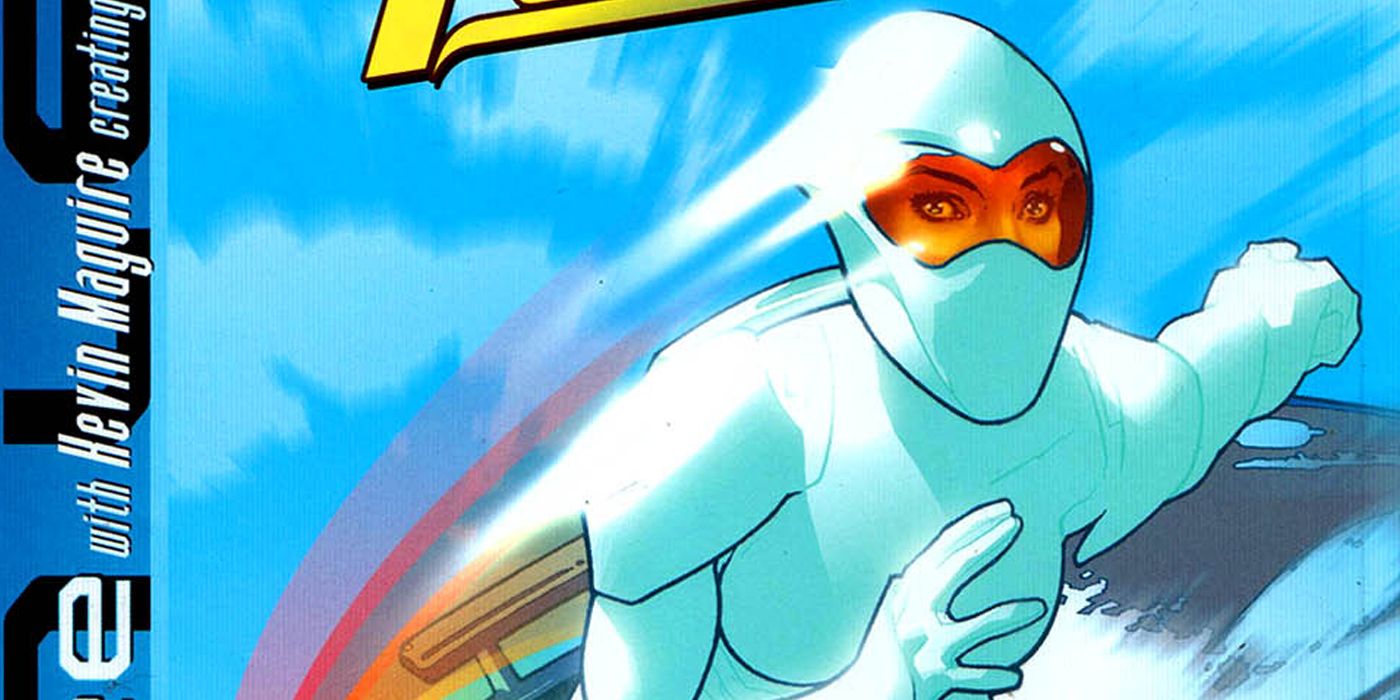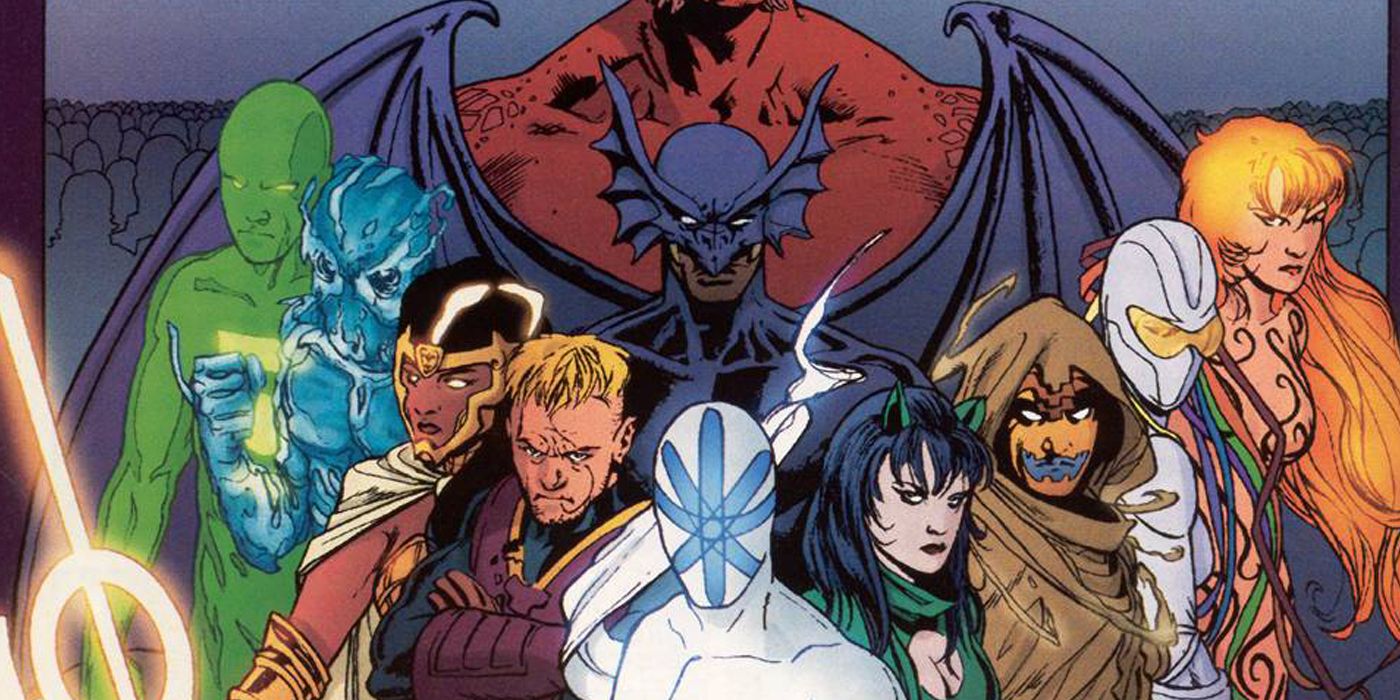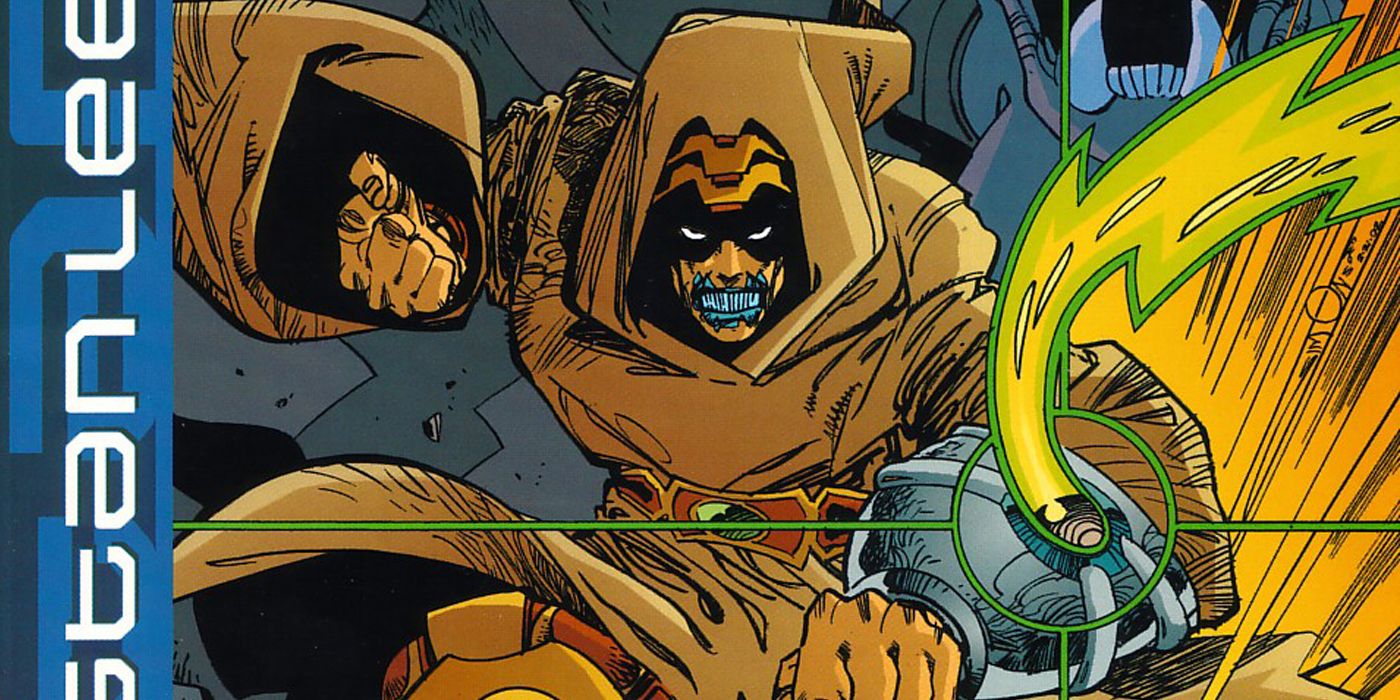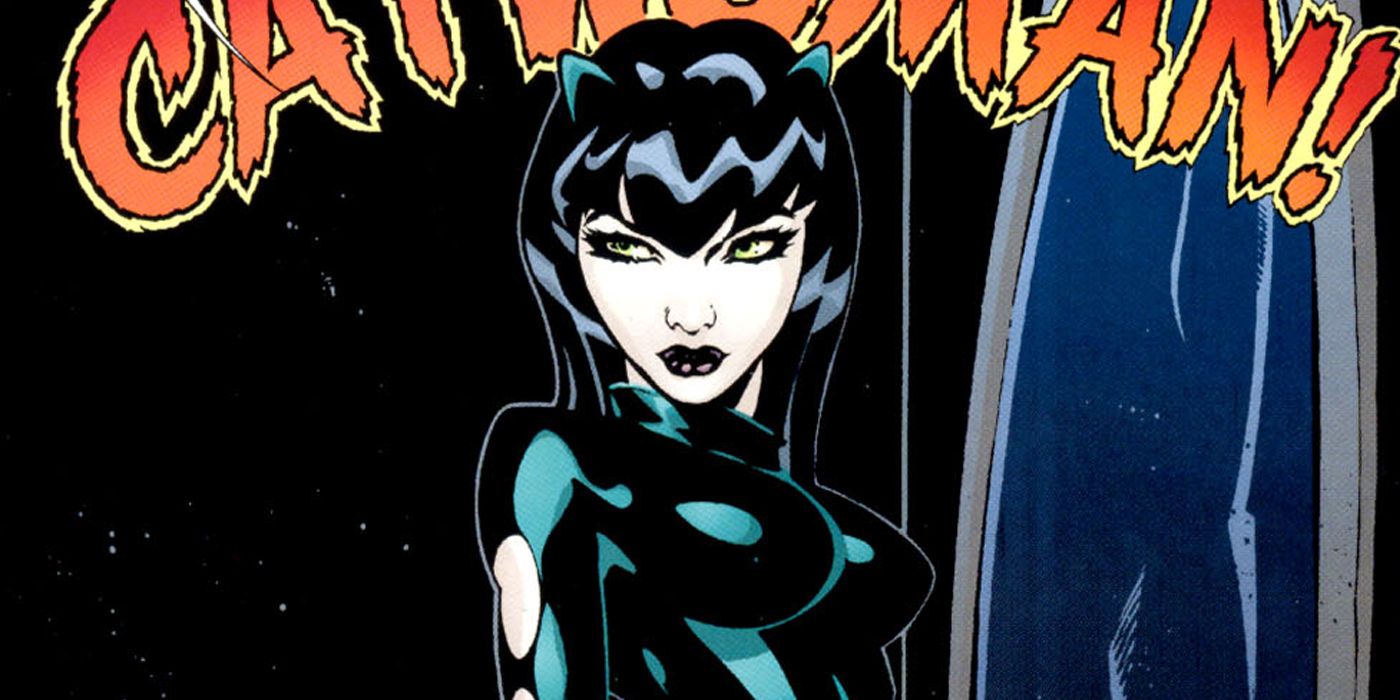While Stan Lee will always be thought of as a co-founder and chief ambassador of the Marvel Universe, he's stepped outside of the House of Ideas a few times. Most notably, Lee crossed company lines in 2001 to write for DC Comics, which he once dubbed Marvel’s "distinguished competition." The much-hyped "Just Imagine..." project, shepherded by film producer/comics writer Michael Uslan, paired Lee with A-list comic artists to give their takes on some of DC's iconic characters over 12 one-shot issues. As Lee wrote in the introduction preceding each issue, the project was meant to be a "fun exercise" and "heartfelt tribute" to the characters and their original creators.
RELATED: Stan Lee's Life Story to Be Adapted as 70s-Set Action Movie
Despite strong early sales, tepid reviews and a steep $5.95 price tag turned readers apathetic, and the final title sold less than half of the first. While ultimately a footnote in comics history, the universe of the "Just Imagine..." characters lives on as Earth-6 in the DC Multiverse. The characters have popped up a few times in recent years for cameos in the alternate reality-focused crossovers "Convergence" and "Multiversity", and are just as likely to appear again if "Multiversity Too" ever happens.
But the "Just Imagine..." universe takes center stage once again as CBR takes a look back at Stan Lee's DC Comics, ranking the 12 "re-imaginings" by each issue's overall quality and conceptual strength.
12 Batman
Unfortunately, the first “Just Imagine...” story is also the worst. Despite solid late-period Joe Kubert art, “Just Imagine Stan Lee’s Batman” (by Stan Lee and Joe Kubert) is a slog; a generic street-level hero tale that reads like Spider-Man’s origin without the pesky lesson about power and responsibility. After being framed for robbery by Handz, the same criminal who killed his father, Wayne Williams spends his time in jail pumping iron and befriending a bat that visits him. After his release, he dons a suit inspired by the animal and becomes a successful professional wrestler known as the Batman. Using his newfound fortune to add working wings and a few other gadgets to the suit, he gets revenge against Handz.
While other Elseworlds tales have twisted and stretched the concept of Batman into fantastic new shapes, Lee delivers a perfunctory take on Batman that doesn’t feel compellingly different from anything that’s been done before. His attempts to write street-level dialogue come across as clumsy and dated, and do little to define one-note characters. Kubert’s art looks fine, but Lee’s script just feels disappointing. A lot of the hype for the “Just Imagine...” project rested on this first book, and the squandered potential here casts a shadow over the rest of the line.
11 Shazam
“Just Imagine Stan Lee’s Shazam” (by Stan Lee, Gary Frank and Sandra Hope) is a bizarre comic book that struggles to juggle elements of fantasy and humor against a Saturday morning cartoon-level plot.
In ancient times, Merlin trapped Morgana Le Fey in a tree before creating a monster to fight her, should she ever get free. Then in modern day India, secret agents Robert Rogers and Carla Noral are searching for Gunga Khan, a monocle-and-leopard print-wearing terrorist who plans to take over the United States with a shrink ray. The two spies fight off some thugs savagely beating a street magician. With his dying breath, the old man whispers the word ‘Shazam’ to Robert before turning into green smoke. Robert soon realizes that saying "Shazam" transforms him into the giant beast that Merlin created. He then defeats Khan and destroys his shrink ray.
With such an outrageous plot, "Shazam" reads like an over-the-top farce that never quite comes together. The plot feels like Lee wanted to drop Etrigan the Demon into “ The Naked Gun,” but the script is just too earnest for that kind of humor. Gary Frank draws the Shazam Monster well and successfully sells some of the book’s more visual slapstick moments, but his depiction of the street magician’s beating is too brutal for this story. Moments of tonal whiplash like this derail the plot’s momentum and make for a frustrating read.
10 JLA
In “Just Imagine Stan Lee's JLA” (by Stan Lee, Michael Uslan and Jerry Ordway), the first team-up in the “Just Imagine...” universe sees Green Lantern call Batman, Superman, Wonder Woman and Flash together to form the Justice League of America to battle Dominic Darrk and the Church of Eternal Empowerment. All of the ”Just Imagine...” books try to build up Darrk and his Church as the line’s Big Bads, but they’re little more than a generic evil cult that wants to destroy and/or take over the world with a combination of ancient artifacts and vague ramblings about power.
Lee and Uslan create some of the more interesting “Just Imagine...” villains here with his Doom Patrol, three death row inmates who were saved and given powers by Darrk at the moment of their executions. But the final battle between Darrk and the Doom Patrol against the JLA feels oddly inconsequential with Darrk’s last minute escape.
Jerry Ordway’s classic detailed art is well-suited to Lee’s over-the-top dialogue for a distinctly Bronze Age-feeling comic. But while Ordway’s JLA might look the part, the inconsistent character voices weaken the team’s dynamics, slotting most of the characters into typical roles. As the culmination of the first wave of “Just Imagine...” titles, this book suffers by not cashing in on the potential some of the individual heroes showed in their solo books.
9 Superman
The idea of a detached Superman isn’t as novel today as it was in 2001, but “Just Imagine Stan Lee's Superman” (by Stan Lee and John Buscema) finds a decent take on a colder Man of Steel.
Admirably drawn by Buscema, Saladin, a Kryptonian police officer, discovers that his wife has been killed by the criminal Gorrok. Using a “flying harness,” Saladin catches Gorrok on an experimental rocket as it hurtles into space. The two fight until they’re separated as the rocket crashes down on Earth, with the planet's lower gravity giving both super-strength. Saladin, calling himself Clark Kent, attains some notoriety after showing off his powers at a circus that dubs him Superman. Meanwhile, Gorrok tries to start a world war at Darrk’s bidding. Superman shows up to save the day and decides to continue protecting this “primitive” Earth while human technology develops to the point where he could return home.
This Superman has the start of a neat hook here with the character doing good for an ultimately personal reason. Buscema’s classic art fits Lee’s writing style well. Like “Just Imagine Stan Lee's Batman” and some other books in the line, Lee almost seems to be trying to make a comment about the nature of celebrity by making so many of his heroes famous. But Lee’s script is too focused on plot and simply runs out of pages before it can delve too deeply into either idea.
8 Robin
Released after the anticlimactic JLA team-up, “Just Imagine Stan Lee's Robin” (by Stan Lee, John Byrne and Terry Austin) goes a long way towards tying the line together by building up Darrk and his Church as a moderately serviceable threat. Stan Lee’s Robin was raised at an orphanage run by Darrk’s Church. He teaches himself how to fight and becomes a martial arts instructor when he ages out of the system. Darrk lures Robin in with the promise of finding his parents and brainwashes him into using his fighting skills to steal the goods to fund his operation and kill Batman. After the duo scuffle, Batman manages to break Darrk’s spell over Robin and they part amicably.
John Byrne’s strong layouts and dynamic martial arts action scenes keep the issue moving along at a decent pace. Lee’s Batman still doesn’t have a distinct voice, but the rest of his script is surprisingly complex, mixing present day action with well-paced flashback scenes. A back-up story by Uslan and John Severin takes a closer look at Darrk’s orphanage, run by Madame Xanadu, recast here as the elderly “Madame X.” Like the rest of the issue, it does the leg work that starts to make the “Just Imagine...” universe feel like an actual place.
7 Aquaman
Out of all of the “Just Imagine...” books, “Just Imagine Stan Lee's Aquaman” (by Stan Lee, Scott McDaniel and Klaus Janson) feels the most like a Silver Age Marvel origin issue. Ramon Raymond is a marine biologist and borderline mad scientist who conducts genetic experiments on his houseboat. After injecting himself with dolphin DNA and swimming into a green patch of water, Ramon discovers that he can transform into a being made out of water. While Aquaman, he has heightened agility and senses, the abilities to shoot water blasts and become intangible, but he cannot flow through small spaces as the issue goes out of its way to explicitly state. As Ramon’s brother Frank, a police officer, is recovering from a gunshot wound, Darrk’s henchmen try to kidnap him, but are beaten back by Frank and Aquaman.
Scott McDaniel’s kinetic art works for the hyper-agile character. Between Frank and Ramon’s girlfriend Amelia, the book has the most believable supporting cast of any of the “Just Imagine...” books. While still old-fashioned, Lee’s quippy dialogue doesn’t slow down the issue. There’s even a moment of genuine pathos when Ramon despairs at what he’s done to his body. Overall, this is a perfectly pleasant origin issue, even if there’s not much to it.
6 Green Lantern
Stan Lee seems to have had a fondness for his Green Lantern, since he made him the closest thing to a focal point the “Just Imagine...” line has. In “Just Imagine Stan Lee's Green Lantern” (by Stan Lee, Dave Gibbons and Dick Giordano), Professor Len Lewis goes to Africa to search for the ancient Tree of Life he calls Yggdrasil, after Norse myth. Darrk’s forces follow him there and shoot him, leaving him to bleed out in the green mist at the tree’s roots. Yggdrasil heals Lewis, transforming him into Earth’s environmental protector, the Green Lantern. Lee’s Green Lantern can shoot energy blasts, fly, and has telekinesis and super strength. After defeating a movie billboard that Darrk turns into a giant Kirby-esque monster, Green Lantern finds the men who shot him just in time to see Darrk execute them from afar.
Especially under Dave Gibbons’ pencils, this bald, naked Green Lantern looks like a queasy version of Dr. Manhattan. Gibbons brings out the inhumanity of the legitimately unnerving Yggdrasil transformation sequence, as the tree’s roots crawl over and into Len’s limp body. Lee’s script is appropriately grandiose here, even if the concept feels like a riff on Swamp Thing. The green mist from Yggdrasil is as good a way as any to hand out powers, and Lee uses it in several other books as convenient narrative shorthand.
5 Wonder Woman
With four on-panel murders, a suicide and an impalement, “Just Imagine Stan Lee's Wonder Woman” (by Stan Lee, Jim Lee and Scott Williams) might be the most graphically violent comic Stan Lee has ever written. In Cuszco, Peru, Maria Mendoza laments the destruction of Incan ruins by the treasure hunter Armando Guitez. After killing Maria’s mother, father, and friendly archaeologist Steve Trevor, Guitez breaks a pair of ancient runes to absorb the power of two demons. While hiding in the ruins, Maria finds the staff of the Incan sun god Manco Cápac, which turns her into Wonder Woman. With an expansive power set including flight, energy blasts and a transforming staff, Wonder Woman follows the Rune Monster to Los Angeles, where she fights and impales him on the steeple of the Church of Eternal Empowerment.
Jim Lee packs the book with solid action sequences. While Wonder Woman’s costume and staff look suspiciously close to Alan Moore and J.H. Williams’s “Promethea,” Jim Lee uses the transforming staff inventively against his well-drawn Rune Monster. In fact, the artist's presence on his first full-length DC Comics work is so commanding that it’s easy to forget Stan Lee is supposed to be the star here. Basing Wonder Woman in Incan mythology is an intriguing set-up, but the idea can only be developed so much in one issue. Despite Stan Lee’s verbose script, this feels more like one of Jim Lee’s Wildstorm books than a companion to anything in the “Just Imagine...” line.
4 Flash
“Just Imagine Stan Lee's Flash” (by Stan Lee, Kevin Maguire and Karl Story) is the most fun book in the “Just Imagine...” line. Teenage geek Mary Maxwell lives with her scientist father, who secretly worked on a project for the organization STEALTH that would allow humans to survive time travel through modified DNA. STEALTH, which aims to get rich by committing robberies in the past, attacks Mary and her father, chasing them around the world. Mary falls ill after falling into green water, so her father injects her with hummingbird DNA to “increase her metabolism.” After STEALTH kills her father, Mary discovers that she has super speed and becomes the Flash. In her newly assembled costume, the Flash infiltrates STEALTH’s headquarters, killing or witnessing the deaths of the organization’s leaders and vowing to fight crime.
Kevin Maguire’s expressive pencils are a perfect fit for Stan Lee’s bombast, equally adept at the script’s lighter and more serious moments. Maguire’s costume design is excellent, with the rainbow ribbons coming off of her helmet creating a striking speed streak in her wake. By giving his Flash powers through animal DNA, Lee gives a nice nod to the Whizzer, Marvel’s WWII-era mongoose-powered speedster. Still, this Flash works best because of who’s under the mask. Mary Maxwell is easily the most likeable character in the “Just Imagine...” universe. Even if Lee’s dialogue doesn’t always ring true, she proves that Lee can still craft a compelling teenage hero.
3 Crisis
The second and final team-up between the “Just Imagine...” heroes, “Just Imagine Stan Lee's Crisis” (by Stan Lee and John Cassaday), brings the universe and the project to a satisfyingly epic conclusion. When another Incan rune is stolen, Wonder Woman summons the universe’s heroes to investigate. Once assembled, Sandman warns them of the imminent threat posed by Darrk’s master, Crisis the Dream Lord, who seeks to merge Earth and his Dreamworld realm together. Conflict erupts among the gathered heroes as they debate how to proceed after learning there’s a traitor in their midst. But when Crisis emerges, the heroes team up for a cosmic battle royale that reveals hidden allegiances and brings threads together from all over the “Just Imagine...” universe. For example, Robin transforms into an avian “Hawk-Man” Rune Monster before flying into the branches of Yggdrasil and turning into the ultra-powerful Atom.
John Cassaday’s art gives the book a blockbuster feel, cramming a dozen characters into inventive layouts. This is a densely populated book, and not every character has more than a moment in the spotlight. But the characters that are more prominent have strong voices, some even stronger than in their own books. The interactions between these drastically different characters are believable. This issue has a lot of moving parts, but Lee’s bombast works here in a way that recalls the “book length epics” that super-hero team-ups used to warrant. Ultimately, this is a suitably grand close to the “Just Imagine...” universe.
2 Sandman
“Just Imagine Stan Lee’s Sandman” (by Stan Lee, Walter Simonson and Bob Wiacek) is a trippy sci-fi fantasy with breathtaking art by Walt Simonson. Larry Wilton is an astronaut on a mission to investigate the link between a mysterious green cloud in space and the “Sleeping Death” plague on Earth. After a Darrk-controlled crewmate sabotages the mission, Larry drifts into the cloud and travels to Dreamworld, the mysterious fantasy world he dreamt of as a child. He encounters the villainous Thief of Souls and meets Melana the Oracle, who gives him a mystical gauntlet that gives him the power of the Sandman. Armed with intangibility, energy blasts and the ability to transform into a sandstorm, he defeats the Thief of Souls, who turns out to be Darrk, and discovers that he caused the plague as a means to prepare the world for the coming of his master, Crisis.
Simonson’s art elevates a good script into something special, with strong panel layouts and designs that give Dreamworld a truly alien fell. Larry’s jaded everyman effectively grounds the more obtuse concepts. The issue smartly starts with the dynamic image of Larry suffocating in space, flashing back to his life as certain death approaches. Lee’s talent for memorable names is on clear display here, with the Thief of Souls being a sadly one-time use title. With such a strong script and beautiful art, this book nicely sets the stage for the big finale.
1 Catwoman
“Just Imagine Stan Lee’s Catwoman” (by Stan Lee, Chris Bachalo and Richard Friend) is a remarkable comic book that perfectly synthesizes the strengths of the creative team. Joanie Jordan is a super-model who laments her “shallow, empty” life. After gunmen break into her apartment, she and her pet cat Ebony are struck by green lightning that links them together. With her increased agility, enhanced senses, and retractable claws, she makes easy work of the gunmen and creates a new identity for herself as Catwoman. Later, she’s kidnapped by the gunmen’s boss, Furgo the Flesh Crawler, a space suit-clad villain with jet boots and the bizarre power to make his victim's skin contort and bubble up on their body. She escapes and foils Furgo’s attempted bank robbery.
Bachalo fills his complex panel arrangements with tight pencils and moody action. He’s a master of using negative space in his artwork, which gives Lee’s ample dialogue plenty of room to breathe throughout the book. Lee’s script does a good job of selling the charming decency of Joanie, filling out her world with her father -- a vigilante-hating detective -- and her colleagues at a modeling agency. Furgo is such an original villain, equally creepy and compelling, that it's a shame this is his only appearance. Combined with an impeccably illustrated backup story by Uslan, Darwyn Cooke and Mike Allred, this book is definitely worth a look through the back issue bin. The worst thing about this comic is that there’s only one issue.
What did you think of Stan Lee's "Just Imagine..." line? Let us know in the comments!
And of course, stay tuned to CBR for the latest updates on all things Stan Lee, True Believers. Excelsior!

